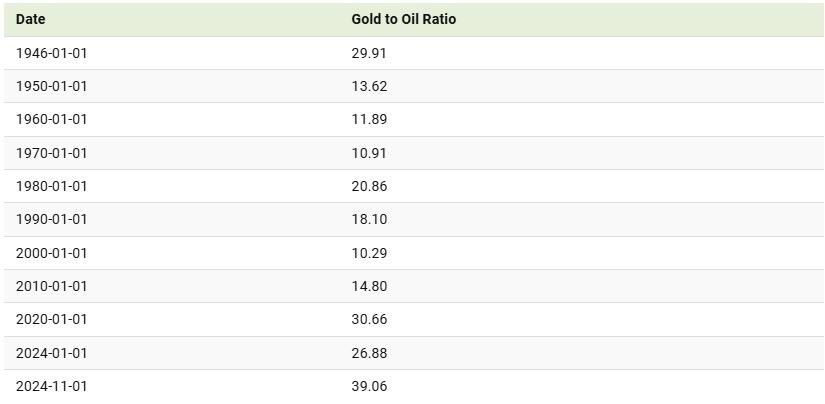
Gold and oil – two of the most influential commodities on the planet – have a fascinating relationship that has evolved over decades, captured in the gold-to-oil ratio. The gold-to-oil ratio represents the number of barrels of crude oil equivalent in price to one troy ounce of gold. It is viewed as an indicator of the health of the global economy, indicating when gold or oil prices are significantly out of balance with each other. What is the Gold-to-Oil Ratio? The gold-to-oil ratio expresses the price relationship between gold and West Texas Intermediate (WTI) crude oil. WTI is a grade of crude oil and one of the three primary benchmarks for oil pricing, along with Brent and Dubai Crude. A high ratio indicates that gold is relatively expensive compared to WTI crude oil, and vice versa. This can indicate periods of outsized demand for energy in the form of crude oil, or periods of monetary uncertainty when there is higher demand for gold. Below is the gold-to-oil ratio every decade between 1946 and 2024. During the 1950s and 1960s, fixed gold prices and stable oil prices kept the ratio between 11 and 13 for 20 years. Since the 1980s, the […]